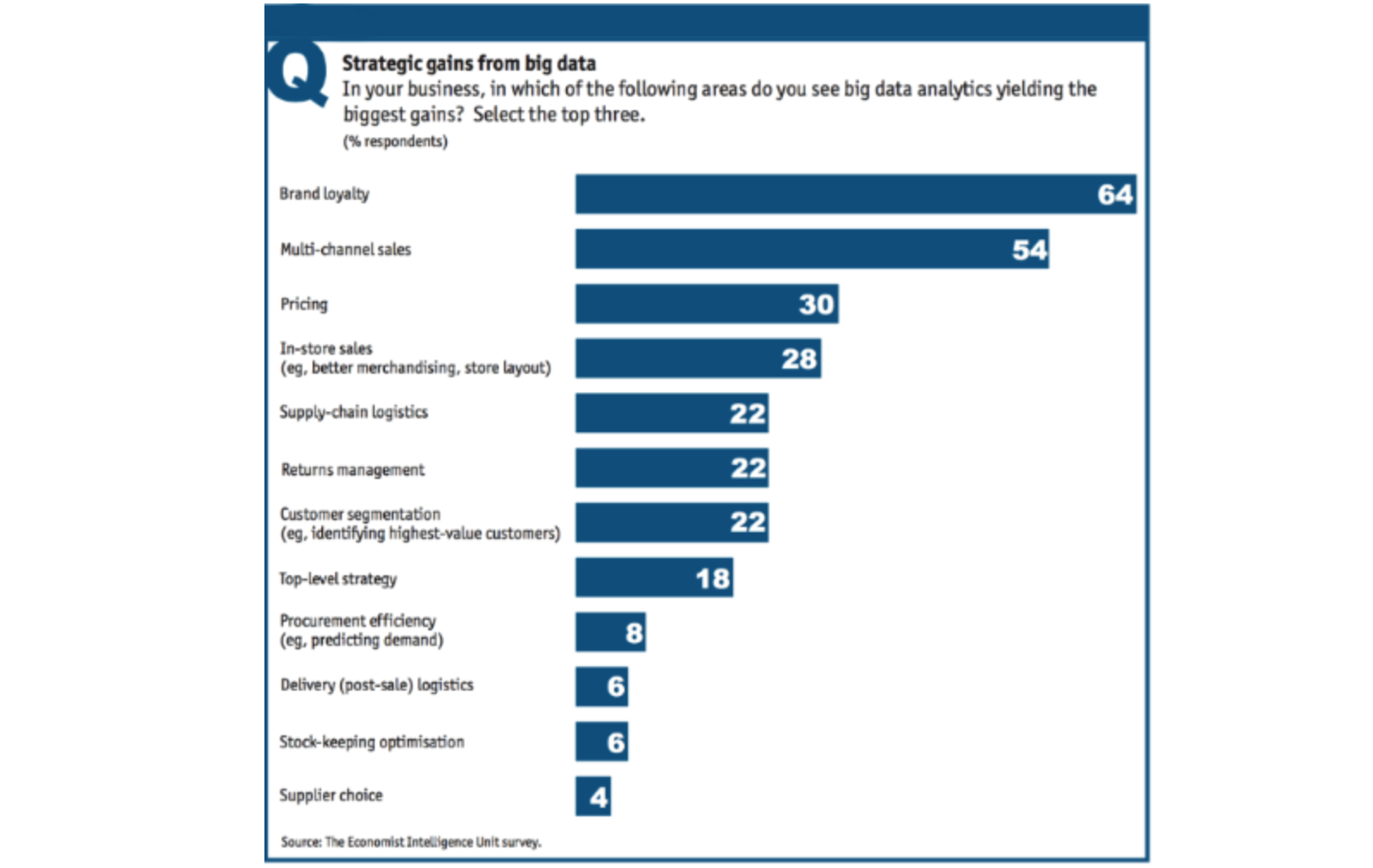Data volume is important…
Many people think of big data as lots of data that is collected by large companies to spy on people. They think of it as this new technology that is slowly revolutionising the way we do business. Big data is not as simple as numbers that businesses are collecting.
Big Data for Dummies states, “Big data is not a single technology but a combination of new and old technologies that help companies gain actionable insights. Therefore, big data is the capability to manage a huge volume of disparate data at the right speed, and within the right time frame to allow real-time analysis and reaction.”
Big data should be thought of as more of a process than just simple numbers. Capturing the data is a major part of big data but generally the idea of big data is broken down into three categories:
- Volume: How much data is captured
- Velocity: How fast data is processed
- Variety: Various types of data
Below I’ll explain a bit about volume. Let’s get to it:
Volume
Although companies have been gathering and analysing data for years now, capturing data on a much larger scale is the new norm. It used to be that data companies were the main types of companies ‘mining’ data, however these days, particularly with the startup boom, all types of companies are trying to gather as much information about customers as possible. In a McKinsey Global Institute study it was reported that by 2009, every company with more than 1000 employees had, on average, 200 terabytes of stored data per company. That’s twice the size of US retailer Wal-Mart’s data warehouse in the same year.
Richard Baker, a retail industry veteran who is chairman of multiple retail giants, explains the challenge facing retail companies, “Data collection is now relatively easy in all different forms, but data is arriving in such a tsunami it’s hard to really make sense of it other than at a very common-sense level.”
The main focus of retailers has historically been on sales and not on the customer. Retailers would analyse historical sales data looking for trends and trying to understand seasonality. These days, data is still about sales in the end, however the focus of data has moved from sales data to as much data around the customer himself in order to understand behaviour and in turn sales. The ability to really identify customers is relatively new, however most retailers have at least started to make use of data for customer loyalty programs. Changing the focus from sales to the customers and analysing the needs of customers can make a huge difference in not only revenue but also operations.
Mr Baker also explains that, “Retailers can now largely be segmented into ‘haves’—the people who know their customers by name, address and what they’re buying and not buying from them—and ‘have nots’ who simply know what they’re selling in aggregate but don’t know whom they’re selling it to. It doesn’t take too much thought to realize that those who know a little bit more can do whatever they’re doing much more efficiently.”
Although big data is not still new, there are many questions as to where big data will continue to fit in in the retail arena. The survey in figure 1 results reflect this. In recent years, retailers have been working on analysing the data they have collected. As you will see, retails believe that the data is very important to their business strategy.
64% of respondents report increased brand loyalty, and 54% report Multi-Channel sales are growing from data analysis (Figure 1). When offered a list of benefits, 52% of respondents said that big data enabled them to increase sales by offering the next logical item (Figure 2). This kind of analysis wasn’t available 15 years ago!
Here are the surveys and answers:
Figure 1

Figure 2

Conclusion
Big Data is no longer the next big thing in retail, it is the now. Analyzing and understanding the generated data will surely give you a competitive advantage. The more data the better as long as the data is focused and is is the means to an end. If you are capturing data for the sake of capturing data then you should rethink where you are allocating resources. Big volume can mean big improvements in business when used correctly.
As I mentioned, I’ll be addressing how fast data can be processed (velocity), in the coming weeks.
________________________________________________________________________________
You can follow us on twitter at @KeplerAnalytics, call us: 1800 300 892 or email us at: info@kepleranalytics.com. At Kepler we believe that privacy is most important. Secondly, understanding your foot traffic and visual merchandising is the start to bridging the gap between the physical and digital. Customer behaviour can help you see what types of communications are working. Linking your foot traffic to digital and traditional marketing campaigns will allow you to see how your marketing efforts actually affect sales. Our goal is to grow your Revenue! As always, do your research and use a solution that helps you achieve the goals of each new project.

